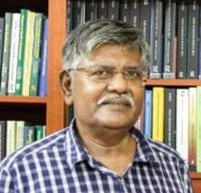Over time, the number of internal migrant labour has significantly increased in India. Most are predominantly engaged in casual and exploitative work arrangements in different urban informal sectors, creating multiple challenges for them. The seasonal mobility of this precarious labour force affects accompanying children adversely at several levels. One of the significant vulnerabilities among the migrating children is their systematic exclusion from their constitutional Right to Education (RTE), consequently shaping their future career prospects and aspirations for their well-being . Although the RTE Act (2009) in India assures free and compulsory elementary education of equitable quality to every child between the ages of 6 and 14 years, the RTE of migrating children is predominantly violated, resulting in the ‘learning crisis’ and ‘learning poverty’ that silently pushes them into the child labour. Ultimately, educational exclusion restricts their occupational mobility, and they fail to break the intergenerational poverty trap. Despite a significant number, policymakers and development stakeholders have not adequately addressed the educational exclusion of migrating children. It will be unjust and unethical if we blame migrating labour for the educational exclusion of their children, as the fundamental reason lies in the exclusionary nature of formal school education, unaccountable institutional mechanism and poor political will.
Over the last two decades, several steps have been taken by the Government of India (GoI) in the direction of universalisation of elementary education and ensuring the inclusion of different socio-economically disadvantaged students. However, this has yet to benefit migrating children. In 2019, the Union Minister for Human Resource (GoI), in his written reply regarding the education of migrating children, stated that there are various interventions under Samagra Shiksha, such as the provision of seasonal hostels, residential camps in villages during the migration of families, residential and non-residential special training centres for out-of-school and dropout children etc. Also, the ministry has approved the setting up of 2.04 lakh primary and 1.59 lakh upper primary schools across the country. One needs to realise that access to formal school, increasing enrollment and universalisation of elementary education could be a few initial steps towards educational inclusion of migrating children. However, these ‘access-centric’ initiatives remain inadequate as they are centred mainly on ‘educational equality’ and remain out of the purview of the ‘equitable education’ framework. Therefore, merely enrolling migrating children into formal schools at destination places is a futile effort to ensure their RTE. It is essential to go beyond the rigid and space-centric traditional schooling model, and one must make specific efforts toward equitable education. The National Education Policy (NEP) 2020 of India emphasises equitable education, but fails to recognise the migrating children as a separate category. Also, the policy is passive in suggesting specific measures and strategies for their education inclusion.
Children accompanying their internally migrating parents are large in number and are a heterogeneous populace. They have a substantial sociocultural, economic and regional diversity among them. They face unique challenges stemming from their migration pattern, spatial context and socioeconomic conditions. Due to their parents’ mobility, these children remain in ‘hard-to-reach’ and ‘invisible’ groups. On this background, addressing their educational marginality and RTE is complex and challenging. Therefore, the first and foremost step should be making them visible by enumerating them, creating demographic profiles, understanding their migration pattern and disaggregating the collected data. Insufficient data is a critical impediment in the inclusion policy and aggravates several vulnerabilities. Such enumerating exercises will help analyse the needs and to develop curriculum and learning models based on equitable education principles. The curriculum should be flexible, capable to bridge the learning gaps and comprise functional literacy, basic numeracy, arts and crafts, life skills, higher-order thinking and sports. Enrolling migrating children in nearby formal schools is unfeasible; hence, Mobile Learning Centres and Crèche (MLCC) in the migrant hotspots and worksite can prove an effective intervention strategy, which will look after early childhood care, psychomotor and cognitive development of migrant children. Especially migrant girls will be benefited from the MLCC as it will reduce their burden of looking after younger siblings at worksite.
The role of a teacher is critical in the process of educating migrating children. However, teachers need to be oriented with equitable education pedagogies and meaningful inclusion of migrating children. Therefore, through pre-service training in the teacher-education curriculum and in-service programmes, one needs to develop essential teaching competencies for confronting the complex learning process of migrating children.
Several Non-government organisations (NGOs), through multiple interventions and policy responses, have contributed significantly in ensuring education for migrant children. However, considering the spread, extent and multi-locations of internal migrants and children, their efforts are insufficient. Hence, there is a need for a robust education inclusion policy with solid support from the government. Therefore, one needs to scale up the state-NGO collaborations and collective initiatives by interstates at the earliest.
In conclusion, it is high time to address the learning needs of migrating children. Compromising upon the RTE of migrating children can deprive them of fully realising their human and constitutional rights. With the context of equitable education envisioned in the NEP 2020, it is an opportunity to all key stakeholders in India to achieve the Sustainable Development Goal of inclusive quality education by developing strategic measures to protect RTE of migrating children.



Join the Conversation